Osias Beert the Elder stands as a foundational figure in the rich tapestry of Flemish Baroque art. Active primarily in Antwerp during the late 16th and early 17th centuries, Beert was among the earliest specialized painters of still life, contributing significantly to the genre's development and popularity in Northern Europe. His meticulously rendered compositions of flowers, fruit, and opulent table settings capture the burgeoning prosperity and complex symbolic world of his time.
Born around 1580, likely in Antwerp or possibly Kortrijk, the precise details of Beert's earliest years remain somewhat obscure. However, records confirm his presence in Antwerp where he embarked on his artistic training. In 1596, he is documented as a pupil of the little-known painter Andries van Baseroes. This apprenticeship laid the groundwork for his technical skills and understanding of the painter's craft within the vibrant artistic hub that Antwerp represented.
Beert's formal entry into the professional art world occurred in 1602 when he was registered as a master in the prestigious Antwerp Guild of Saint Luke. This membership not only conferred official status but also allowed him to establish his own workshop, take on pupils, and sell his works independently. It marked the beginning of a successful, albeit relatively short, career dedicated almost exclusively to the art of still life.
Artistic Style and Signature Techniques
Osias Beert the Elder developed a distinctive and highly influential style characterized by meticulous detail, a jewel-like palette, and a particular compositional approach. He often favored painting on copper panels, a support that enhanced the luminosity and smooth finish of his works, allowing for incredibly fine rendering of textures and light reflections. Oak panels were also commonly used.
A hallmark of Beert's compositions is the elevated viewpoint. This high vantage point allows the viewer to look down upon the arrangement, clearly distinguishing each object laid out across the tabletop. His arrangements often appear additive, with items placed side-by-side or slightly overlapping, rather than deeply receding into space according to strict linear perspective. This creates a decorative, almost map-like presentation of the assembled objects.
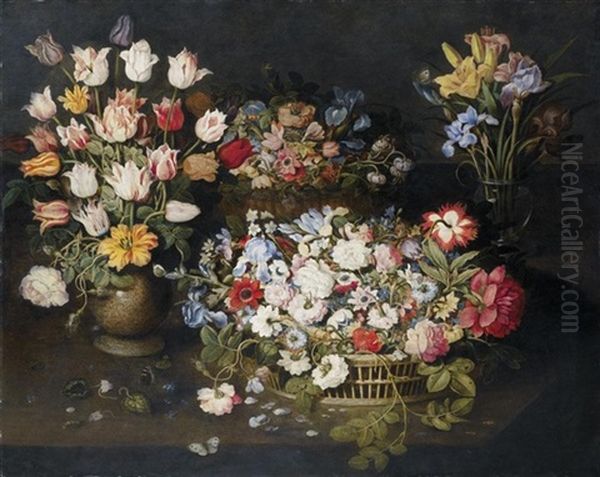
Beert excelled in capturing the diverse textures of the items he depicted – the delicate translucency of glassware, the hard sheen of porcelain, the soft bloom on fruit, the crispness of petals, and the moist gleam of oysters. His application of paint was precise and controlled, often using thin glazes to build up rich, saturated colors and subtle tonal variations. Light typically enters his scenes from the side, illuminating the objects against a dark, neutral background, which further emphasizes their form and color.
The Splendor of Floral Compositions
Flower painting was one of Beert's primary specializations, and he was among the pioneers of the independent floral still life in Flanders, alongside contemporaries like Jan Brueghel the Elder and Ambrosius Bosschaert the Elder. His flower pieces are celebrated for their botanical accuracy, vibrant colors, and often complex arrangements featuring blooms from different seasons.
Works such as Bouquet of Flowers in a Serpentine Vase (c. 1610-1619) exemplify his approach. He meticulously renders tulips, roses, irises, lilies, and other prized flowers, often placing them in ornate vases or simple glass beakers. These bouquets were not typically observed directly from nature as a whole arrangement, as the flowers depicted often bloomed at different times of the year. Instead, Beert likely worked from individual studies, composing these "impossible bouquets" as artistic creations showcasing nature's diversity and beauty.
Beyond their aesthetic appeal, Beert's flower paintings are imbued with symbolism resonant with the era's worldview. The ephemeral beauty of flowers served as a potent reminder of the transience of life and earthly pleasures – a common vanitas theme. Insects like butterflies (symbolizing resurrection or the soul) and dragonflies (sometimes associated with the devil or fleetingness) often appear among the blooms, adding layers of meaning related to life, death, and salvation. His Still Life with Tulips and an Apothecary’s Rose (c. 1610-1620) is another fine example of his skill in this domain.
Pioneering Breakfast and Banquet Scenes
Osias Beert was also at the forefront of developing the "breakfast piece" (ontbijtstuk) or banquet scene in Flemish painting. These works typically depict arrangements of food, drink, and expensive tableware laid out on a table, reflecting the prosperity and tastes of the Antwerp merchant class. He was one of the very first artists to focus intently on presenting food and cutlery in this manner.
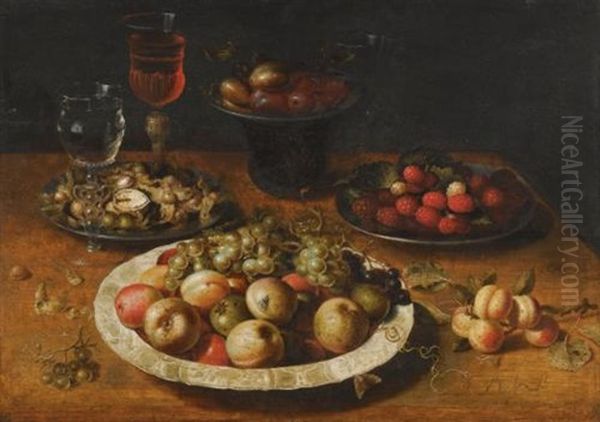
His breakfast pieces often feature delicacies such as oysters, pastries, fruits (cherries, strawberries, grapes), nuts, and sweets, accompanied by wine in elaborate Venetian-style glasses (römers), silver cutlery, and imported Chinese Wanli porcelain bowls. The inclusion of these luxury items spoke to Antwerp's status as a major international trading port. Still Life with Oysters, Fruit, and Wine (c. 1620-1625) showcases his ability to render these elements with stunning realism.
Like his floral works, Beert's breakfast pieces carry symbolic weight. The abundance displayed can be read as a celebration of wealth and God's bounty, but also as a subtle warning against gluttony and excessive attachment to worldly goods. The presence of specific items could carry further connotations; for instance, in Still Life with Cherries and Strawberries in Porcelain Bowls, strawberries were sometimes seen as fruits of paradise, while cherries could symbolize the blood of Christ or the soul. The meticulous depiction of expensive but fragile items like porcelain and glass also subtly reinforced the vanitas theme of life's fragility. His style influenced later masters of the genre, including Clara Peeters, who some scholars speculate may have even studied with him due to stylistic similarities, and indirectly, Haarlem painters like Pieter Claesz and Willem Claesz. Heda.
Layers of Symbolism and Meaning
Symbolism is deeply woven into the fabric of Osias Beert's still lifes. While celebrating the visual beauty and tangible reality of objects, his paintings invite contemplation on deeper themes prevalent in the devoutly Catholic society of Flanders during the Counter-Reformation, as well as the universally understood concept of vanitas.
The juxtaposition of perishable items like flowers and food with durable, expensive objects like metalwork or porcelain highlights the contrast between fleeting life and the allure of lasting material wealth. The choice of specific flowers, fruits, or insects often carried established symbolic meanings rooted in religious tradition or contemporary emblem books. Butterflies could signify the resurrected soul, while flies might represent decay or sin. A partially peeled lemon, a common motif in later Dutch still life, could symbolize temperance or the deceptive nature of appearances (attractive outside, sour inside).
Beert’s detailed rendering of imported goods, particularly the blue-and-white Wanli porcelain from China, not only showcased his technical virtuosity but also reflected Antwerp's global trade connections and the collecting habits of its affluent citizens. These objects were status symbols, and their inclusion grounded the paintings in the specific economic and cultural context of early 17th-century Antwerp, even as they participated in broader symbolic discourses about life, death, and morality.
Life Beyond the Easel: Merchant and Citizen
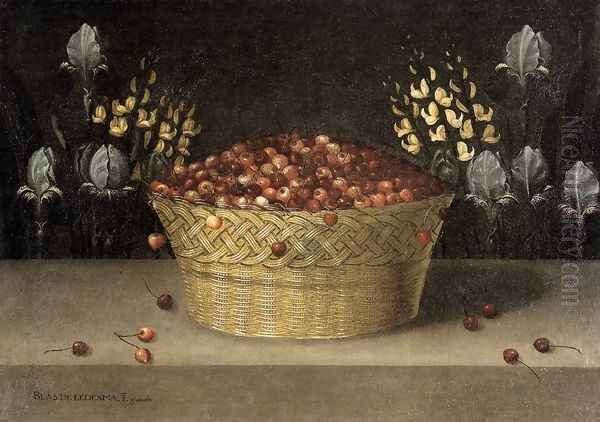
While painting was his primary vocation, Osias Beert the Elder was also involved in other aspects of Antwerp life. Archival evidence suggests he was active as a cork merchant. This dual role as artist and tradesman was not uncommon at the time, providing financial stability and potentially offering different perspectives that might subtly inform his art – perhaps an appreciation for materials or trade goods.
Furthermore, Beert was a member of the 'De Olijftak' (The Olive Branch), one of Antwerp's Chambers of Rhetoric, from 1615 onwards. These societies were important cultural institutions, fostering literature, poetry, and drama, often with elaborate public performances. His membership suggests an engagement with the broader intellectual and cultural life of the city beyond the visual arts.
His personal life is partially documented. In 1606, he married Margaretha Yekens (or Ykens). The couple had a large family, reportedly with 12 children, although infant and child mortality rates were high at the time. His family life unfolded against the backdrop of Antwerp's complex history, marked by periods of economic boom and the ongoing religious and political tensions of the Eighty Years' War. Beert passed away in Antwerp towards the end of 1623 or early in 1624.
Workshop, Pupils, and Artistic Influence
As a master in the Guild, Osias Beert operated a workshop and trained apprentices. Records indicate several pupils studied under him, including Frans van de Borch, Paul Pauwels, Jan van Limburg, and, significantly, his own nephew, Frans Ykens. Frans Ykens (1601–1693) went on to become a successful still-life painter in his own right, clearly absorbing influences from his uncle's style while developing his own variations.
Beert's son, Osias Beert the Younger (1622–c. 1678), also became a painter and joined the Guild in 1645. However, his father died when he was very young, limiting any direct paternal training, and his work is less known and distinct compared to his father's or his cousin Frans Ykens'.
Osias Beert the Elder's influence extended beyond his direct pupils. His innovative approach to still life composition and his mastery of detail were highly regarded. Even the towering figure of Antwerp painting, Peter Paul Rubens, owned works by Beert, indicating the esteem in which he was held by the leading artist of the day. Beert's pioneering efforts laid crucial groundwork for the next generation of Flemish still-life specialists, such as Jacob van Hulsdonck, Jacob van Es, and Alexander Adriaenssen, who continued to explore and expand the genre.
Contemporaries and the Antwerp Art Scene
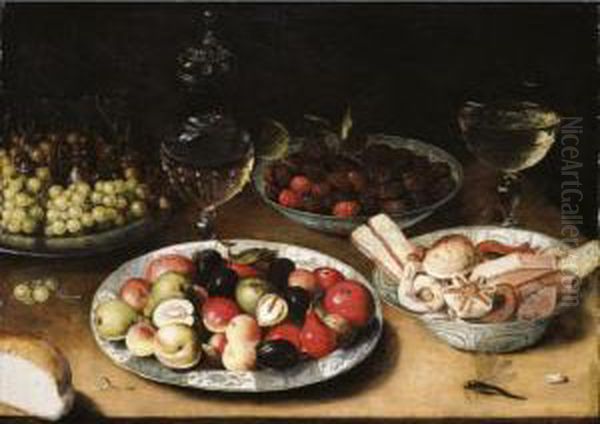
Osias Beert the Elder worked during a period of extraordinary artistic ferment in Antwerp. Although the city had passed its absolute economic peak, it remained a major European center for art production and innovation, largely dominated by the influence of Peter Paul Rubens upon his return from Italy in 1608. Beert's specialized focus on still life placed him within a growing field of painters catering to a market eager for diverse types of imagery.
His key contemporaries in still life included Jan Brueghel the Elder, known for his exquisite flower pieces and allegorical scenes often painted on copper, and Ambrosius Bosschaert the Elder, who worked in a similarly precise style, primarily in Middelburg but clearly connected to Antwerp trends. Clara Peeters, another important early female artist specializing in still life, shared stylistic affinities with Beert.
Beyond still life specialists, the broader Antwerp scene included masters like Frans Snyders, renowned for his large-scale market scenes and dynamic depictions of animals and hunts (Snyders sometimes collaborated with Rubens, painting animals or still life elements in his compositions). Jacob Jordaens and Anthony van Dyck were other major figures associated with Rubens's circle, focusing primarily on history painting and portraiture, but contributing to the overall dynamism of the Antwerp school. Beert's work, while distinct in its focus, was part of this vibrant ecosystem of artistic production and exchange.
Legacy and Collections
Osias Beert the Elder's legacy lies in his crucial role as a pioneer of Flemish still-life painting. His works established key compositional formats and thematic concerns for both floral and breakfast pieces that would be developed by subsequent generations of artists in Flanders and the Dutch Republic. His meticulous technique and sensitivity to texture set a high standard for the genre.
Relatively few paintings bear his full signature ("Osias Beert"), and dating his works precisely is challenging due to the consistency of his style throughout his career. Many works are attributed to him or his workshop based on stylistic analysis. Despite the questions surrounding attribution for some pieces, a significant body of work is confidently associated with him.
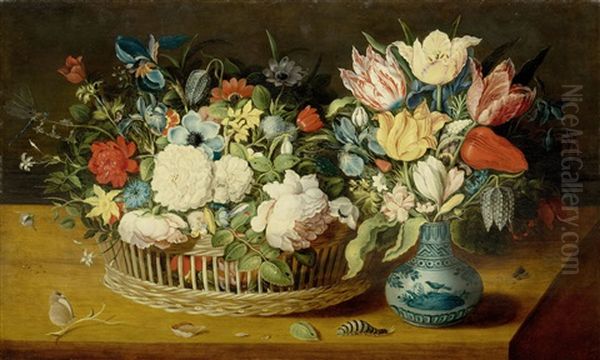
Today, paintings by Osias Beert the Elder are held in major museums across the world, including the Prado Museum in Madrid, the Rijksmuseum in Amsterdam, the National Gallery in London, the Louvre in Paris, the Gemäldegalerie Alte Meister in Dresden, the Ashmolean Museum in Oxford, and various institutions in the United States like the Getty Museum in Los Angeles. These collections preserve the legacy of an artist whose focused dedication to still life helped elevate it to a respected independent genre, capturing the beauty, wealth, and underlying spiritual concerns of the Flemish Baroque era.
Conclusion: A Master of Detail and Symbol
Osias Beert the Elder remains a pivotal figure in the history of European still-life painting. Working in the bustling artistic environment of early 17th-century Antwerp, he distinguished himself through his exquisite rendering of flowers, food, and precious objects. His compositions, characterized by their clarity, detail, and often symbolic depth, offer a fascinating window into the material culture and worldview of his time. As a founder of both the floral bouquet and the breakfast piece genres in Flanders, Beert's influence was profound, paving the way for the rich development of still-life painting throughout the Baroque period and securing his place as a master of meticulous observation and subtle meaning.